For every chlorine tablet that dissolves in your pool, a small amount of cyanuric acid also dissolves into the pool water. For most pools with adequate rain, backwashing and winter pump down, it won’t build-up to a high level. However in pools that are covered, indoors or with cartridge filters, and in dry regions with little rainfall, cyanuric acid levels can rise too high, too fast.
And when the cyanuric acid level creeps up too high, in the 80-120 ppm range, it can be hard to maintain a good chlorine level, and the killing power of chlorine is suppressed. So pool owners are told to reduce the cyanuric acid level, by draining and refilling the pool. Here are some other alternatives to using stabilized chlorine.
Non-Stabilized Chlorine Alternatives
1. Liquid Chlorine
You could add liquid chlorine from a gallon bottle every day, but to avoid peaks and valleys in chlorination, use a Chemical Metering Pump to inject the liquid chlorine directly into the return line, slowly throughout the day. You could use a gallon bottle, but a 5-gal or 15-gal drum is more convenient set on the ground below a wall-mounted liquid chlorine pump, which pulls the bleach out of the container and pushes it into the return line via hose injection fitting.
Chemical pumps are adjustable, in seconds of run time per minute, turning on/off to maintain the setting, but they are constant run. A plug-in timer can be used, if you don’t run your filter 24/7. Requires care with the handling and storage of bleach, and the very high pH which will require frequent additions of pH decreaser. Pumps and hoses also require some measure of upkeep, or repairs to hoses and fittings.
2. Salt Chlorinator
Salt chlorinators, aka salt chlorine generators, will create most of the chlorine needed for your pool. Add several hundred pounds of pure pool salt, and plug-in the controller and salt cell to make the magic. The salt cell will create chlorine instantly in the pipe from plain old salt + h2o, and after the chlorine is spent, it reverts back to salt + h2o again.
Salt Cells need some repair or replacement parts every 3-5 years, but in the long run a salt system can cost around the same as the cost of using tablets. But of course, like using liquid chlorine, no stabilizer is added to the chlorine that your salt system creates, although maintaining a 20-40 ppm CYA level is recommended for most outdoor pools. People also like the ease of use of a salt system, and the soft silky feel of the water. The main downside to a saltwater pool is the initial cost of the saltwater systems, and the 5 yr (+/-) life on salt cells, sensors, circuit boards and such. But the chlorine, that’s hands free and easy to control with push button simplicity.
3. Cal-Hypo Tablets
Tablets made out of calcium hypochlorite, a similar formula to the cal-hypo pool shock that we sell, but pressed into 1″ tablets. Cal-hypo tablets cannot be used in a regular 3″ Trichlor tablet feeder, because they dissolve too rapidly. Cal-hypo feeders are used to spray individual tablets with water, slowly one at a time, to release the non-stabilized chlorine into the return line. Like cal-hypo shock, cal-hypo tablets are unstabilized chlorine tablets, containing no cyanuric acid. Cal-hypo tablets are more expensive than regular tablets to buy, and the specialized feeders required to use them are also on the pricey side. For pools in hard water areas, cal-hypo tablets will add calcium to the water, in about the same amount as Trichlor tablets add cyanuric to the water – so you may be trading one problem for another.
4. Reduce Chlorine Demand
There is a fourth method or alternative practice, which may work for some, and that is to reduce the amount of stabilized chlorine tablets used, by reducing the chlorine demand. This can be done by augmenting or supplementing your chlorine with a Nature2 Express or Frog Mineral system, along with regular pool shock treatments, good water balance and good filtration practices.
With minerals, you can use 50% fewer tablets, just enough to produce a low 0.5 ppm level of free chlorine. Most people cut their chlorine tablet usage in half when using a mineral purifier! For example, if your pool uses 4-6 tablets per week, you will only need 2-3 tabs per week, which slows the build-up of cyanuric acid by 50% – which can be enough to alleviate the problem for some pool owners.
5. Go Tablet Free
Take the fourth method above, and add another alternative sanitizer like Ozone or UV purifiers to the mix, and you can stop using chlorine tablets altogether. When you add the 1-2 punch of a Mineral System + Ozone or UV Systems – you don’t need to use any tablets at all. It’s true – any clean pool with good water balance and a large effective pool filter, with regular shocking (either non-chlorine or chlorine shock), can use a Minerals + Ozone, or Minerals + UV combination to replace the need for stabilized chlorine tablets. Additional helper chemicals like clarifiers, algaecides, and enzymes can also be employed if needed.
Sodium Hypochlorite vs. Cal-Hypo vs. Trichlor
Sodium Hypochlorite (liquid chlorine)
Liquid chlorine is a popular choice where available. However, due to the very high pH (13) of liquid chlorine, a gallon of acid is required for every 10 gallons of bleach used, and maintaining constant pH and alkalinity levels can become difficult. Liquid chlorine systems also require a safe space for large chlorine vats, and close access for a bleach delivery truck.
Cal-Hypo
Granular cal-hypo is another choice for large pools with high chlorine demand. Granular has a fairly high level of pH (11), but tablets are lower (9). It won’t contribute to cyanuric acid or salt levels (sodium), but it does increase calcium hardness levels in the pool, which could be undesirable for hard water areas. The tablet form may also come mixed with additives to help clarify the water or reduce stain and scale formation.
Trichlor
3″ trichlor tablets or sticks are not usually used for large commercial pools, as they don’t dissolve fast enough to meet the chlorine demand, but are more suited to pools under 50,000 gallons. Being stabilized, Trichlor tablets will build up cyanuric acid in pools over time, requiring periodic additions of fresh water. Having a very low pH level, Trichlor tablets depress the pool water pH and alkalinity levels, requiring frequent additions of pH increaser.
Chlorine Delivery Systems
Sodium Hypo (liquid chlorine)
Delivered via trucks that also supply dry cleaners and industrial users of bleach, and pumped into 50 gallon vats. For smaller pools, liquid chlorine can be hand fed daily, or 5 gallon drums can be used. Chemical pumps are used to pump from the chlorine vat or drum into an injection fitting placed into the return pipe, and have a dial to control the chlorine flow amount.
Cal-Hypo
Used by either manually broadcasting or dissolving into water and pouring into the pool, or it can be used with a granular cal-hypo feeder. Cal-hypo is also made in pellets and pucks, or tablets of various sizes, designed to be used in specific feeders, usually made by the tablet manufacturer, although they could be used in floaters, or floating chlorinators. Most cal-hypo feeders, like the Accu-Tab or the Pulsar, are expensive and complicated items, with exception to the CCH feeder, or the new CCH Endurance feeder and Endurance cal-hypo tablets.
Trichlor
Used in a typical residential chlorinator, installed onto a return line, holding up to 9 lbs of tablets, and can also be used in a chlorine floater. Dichlor can be dispensed in a granular feeder made specifically for Dichlor, such as the Watermatic dichlor feeder, and although more pH balanced, is one of the most costly feeders and types of chlorine to use. In many pools, build-up of cyanuric acid is a concern as it reduces the efficacy of chlorine and requires periodic draining and refill with fresh, unstabilized water.
Cal-hypo tablets may make sense for you if you operate an indoor pool, or a not too large outdoor pool with problems with cyanuric acid levels rising too fast, and you don’t have extremely hard water in your area.
There you have it, 3 types of unstabilized chlorine or chlorine without cyanuric acid, and 2 alternative practices that can be used to help the problem with cyanuric acid build-up in pools. All of these methods are tried and true, and can be safely and effectively used in most residential inground pools, with good filter systems. Some are more convenient than others, and all have a significant initial cost to switch over to using non-stabilized chlorine.


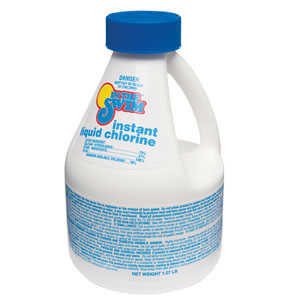
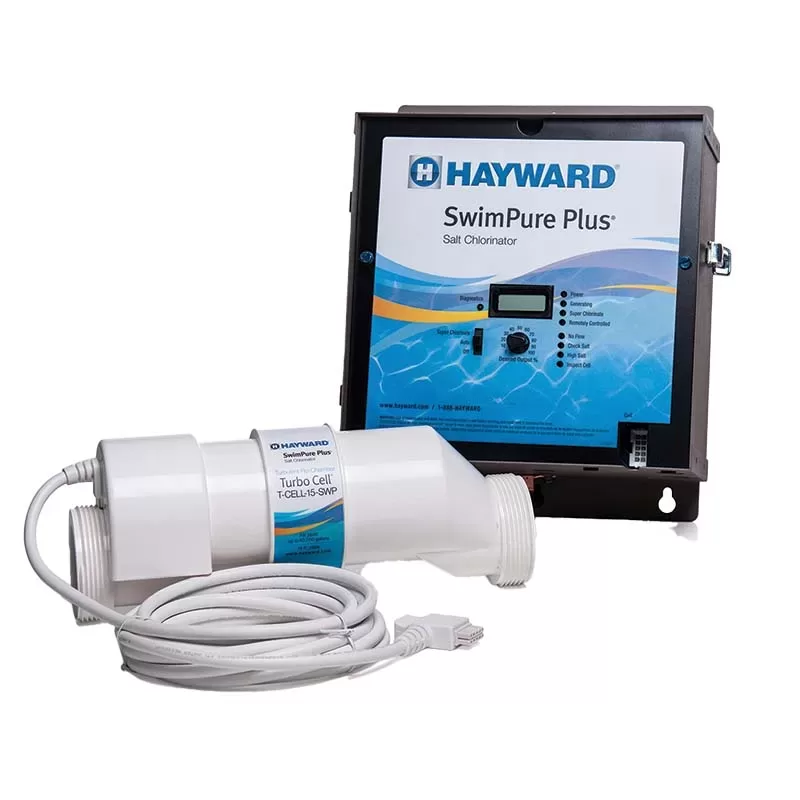



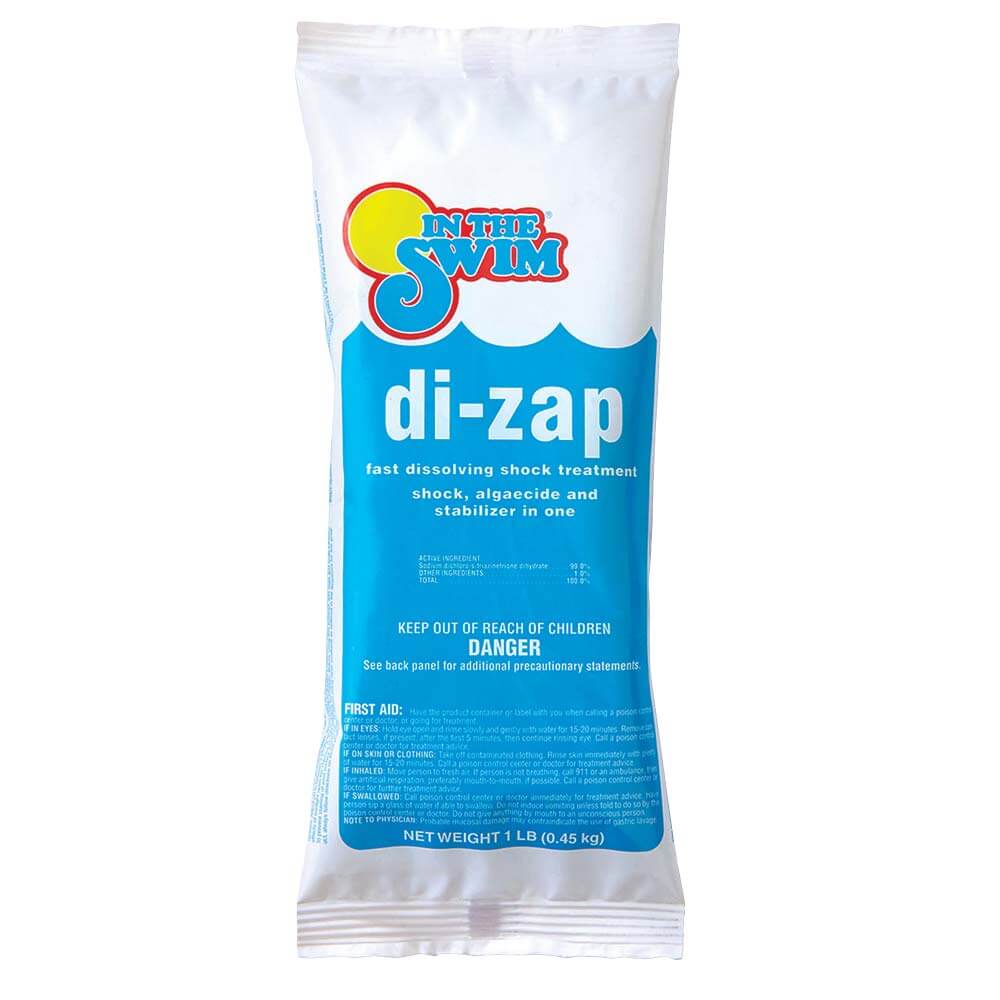


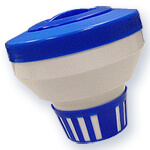

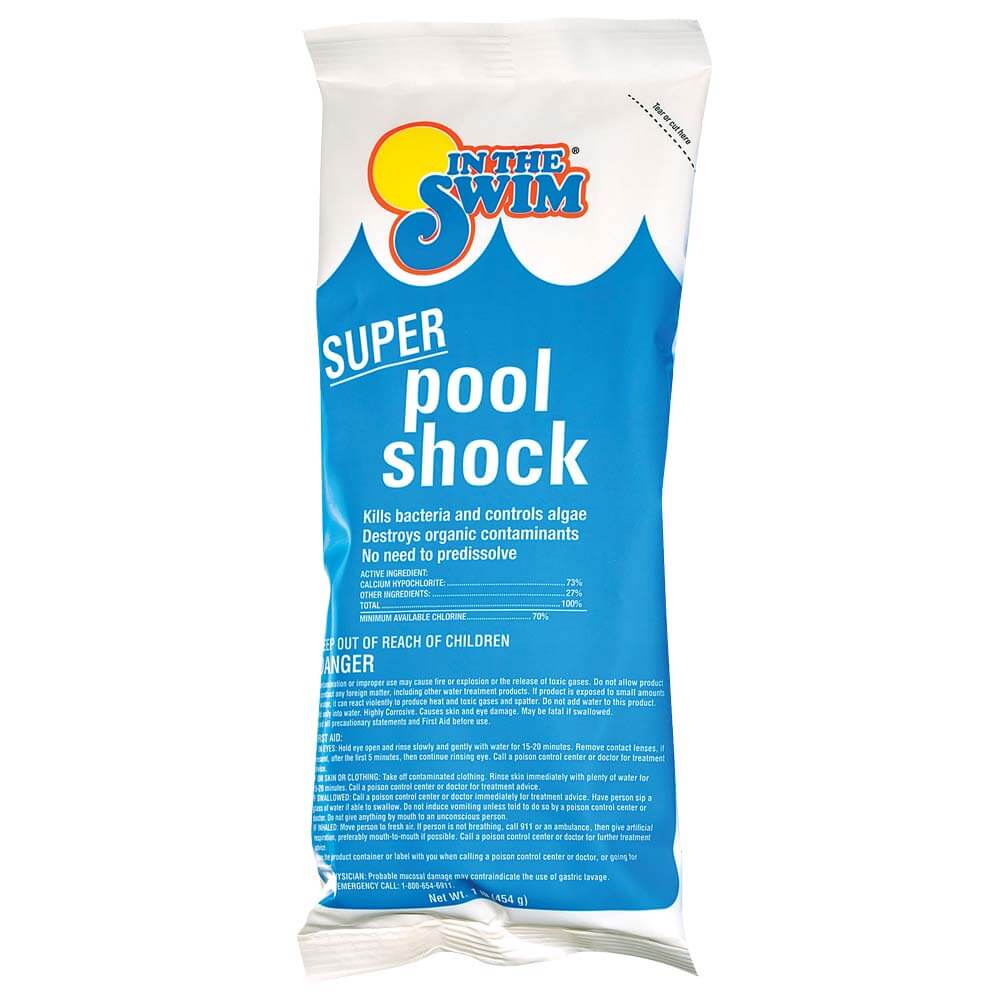
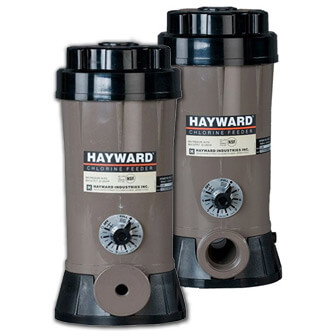

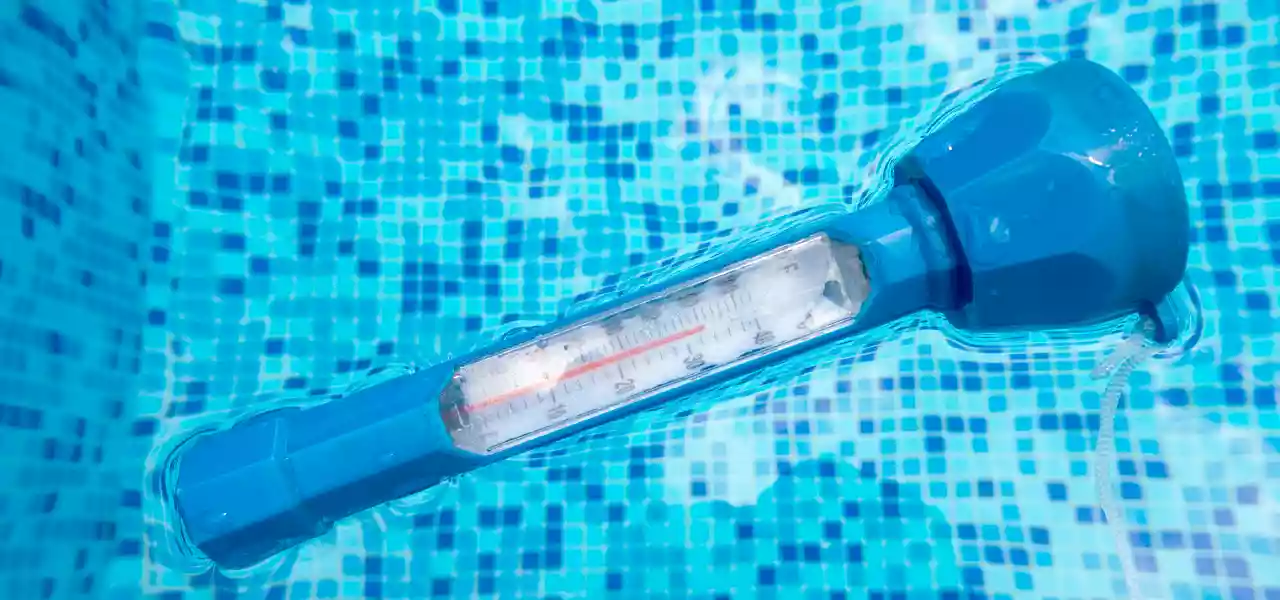
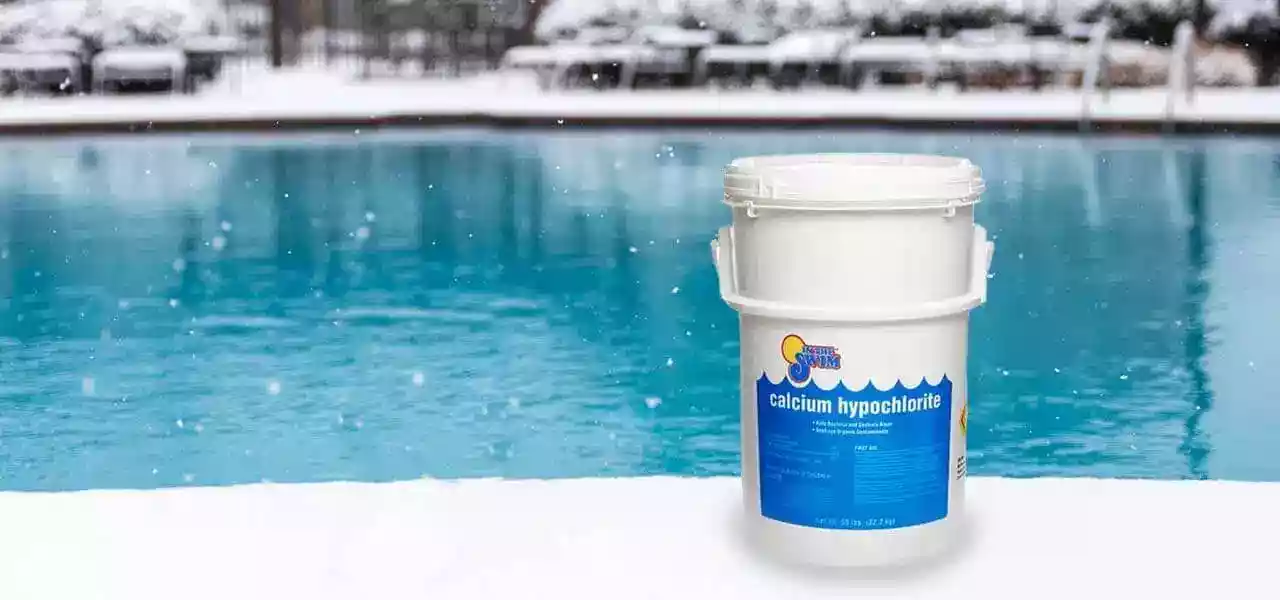
Hello. Any thoughts on usings the 3 inch Cal Hypo tabs in a trichlor chlorine feeder? Are you saying cal hypo will dissolve too fast in trichlor feeders no matter what or only the 1 inch tabs? What is different in the cal hypo feeder than the trichlor feeder?
Thanks!
Hi Michael, Cal Hypo tabs turn to mush when submerged in water. Cal Hypo feeders only wet one tablet at a time, with a sharp stream of water. The tablets are typically stacked, and when the bottom tablet dissolves, the next tablet drops into place and begins to dissolve, one at a time. Do Not put Cal Hypo tablets into a trichlor feeder, they will clog up the feeder, and if there is trichlor residue from previous use, it could explode or ignite or create a dangerous gas – I’m not sure what – but it could be very hazardous.
Great Information, thank you.
I have my pool since 1998. I went 18 years without having to replace the water. I’m in Michigan and the pool is in direct sun and often has the solar cover on it to retain heat. I have only had CYA issues for the last 3 years. What happened in the last few years that has provided me with this constant CYA problem?
Hi Chuck, perhaps you have had less rain, or lowered the water less than before for winter, or backwashed less, or fixed a leak in the pool, or have been using more stabilized chlorine than before…? It’s good to replace the water – old water is harder to manage, drain half the pool and refill. It’s not wasting water, as the water is constantly recycled on the earth, and water is very cheap in Michigan.
I have automatic clorinator I use 3″ clorine tablets in it. I also use shock with clorine. My cyanuric acid is high at 54.. I run my clorinator at 4 out of 6. My question is I have about 3 cases of shock with clorine what can I do so I can use them.
Hi, you could use fewer tablets in the chlorinator, and/or turn down the dial to 1 or 2, and then add a dose of granular chlorine each day or every other day to take the place of the reduced tablet chlorination. Depending on your pool size it could be 2-4 oz, more or less. 2.0 oz of Cal Hypo 65% shock will add 1.0 ppm, in 10,000 gals of pool water. This will also keep your cya from rising much more, by using fewer stabilized tablets. You may want to drain some water over the summer, about 1/4 of the pool, and refill, if it rises much more.
Can you use the Nature2 Express or Frog Mineral system with a salt water system?
Yes you can! Mineral systems will allow you to run the pool with much less chlorine being needed, which reduces the workload for your salt cell! OR… it could probably allow you to run your salt system without using cyanuric acid, if your pool is not very sunny.